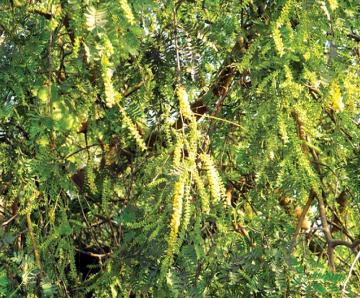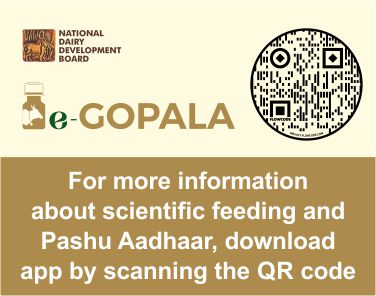
Prosopis cineraria
Prosopis cineraria, locally known as khejri, has an important place in the economy of the Indian desert. In the arid zone of Rajasthan, camels, goats, donkeys and mules, which make up about 40% of the 19 million head of livestock in the region, depend on browsing to meet their nutrient requirements.
Khejri is well adapted to the very dry conditions in India and is found in zones with annual rainfall ranging from 150-500 mm; the optimum density is seen between 350-400 mm range. This plant produces leaves, flowers and fruit during the extreme dry months (March-June) when all other species adapted to arid zones are leafless and dormant. It is the characteristic which deserves greatest attention as the tree offers a new forage resource for extreme arid zones. Khejri is a slow growing tree in its early stages, requiring 10-15 yrs to develop a height of 6 m, compared to 12-15 m in 4-5 yrs for Prosopis juliflora (Vilayti babool). An average tree yields 25-30 kg of dry leaf forage per year.
Nutritional value
Khejri trees are ready to provide animal feed from the 10th year onwards and, if properly managed, may be kept in production for 2 centuries. Leaves contain 15% crude protein and 15-20% crude fibre. Calcium and phosphorus contents are 1.92% and 0.18%, respectively. Total digestible nutrients are 40%.
